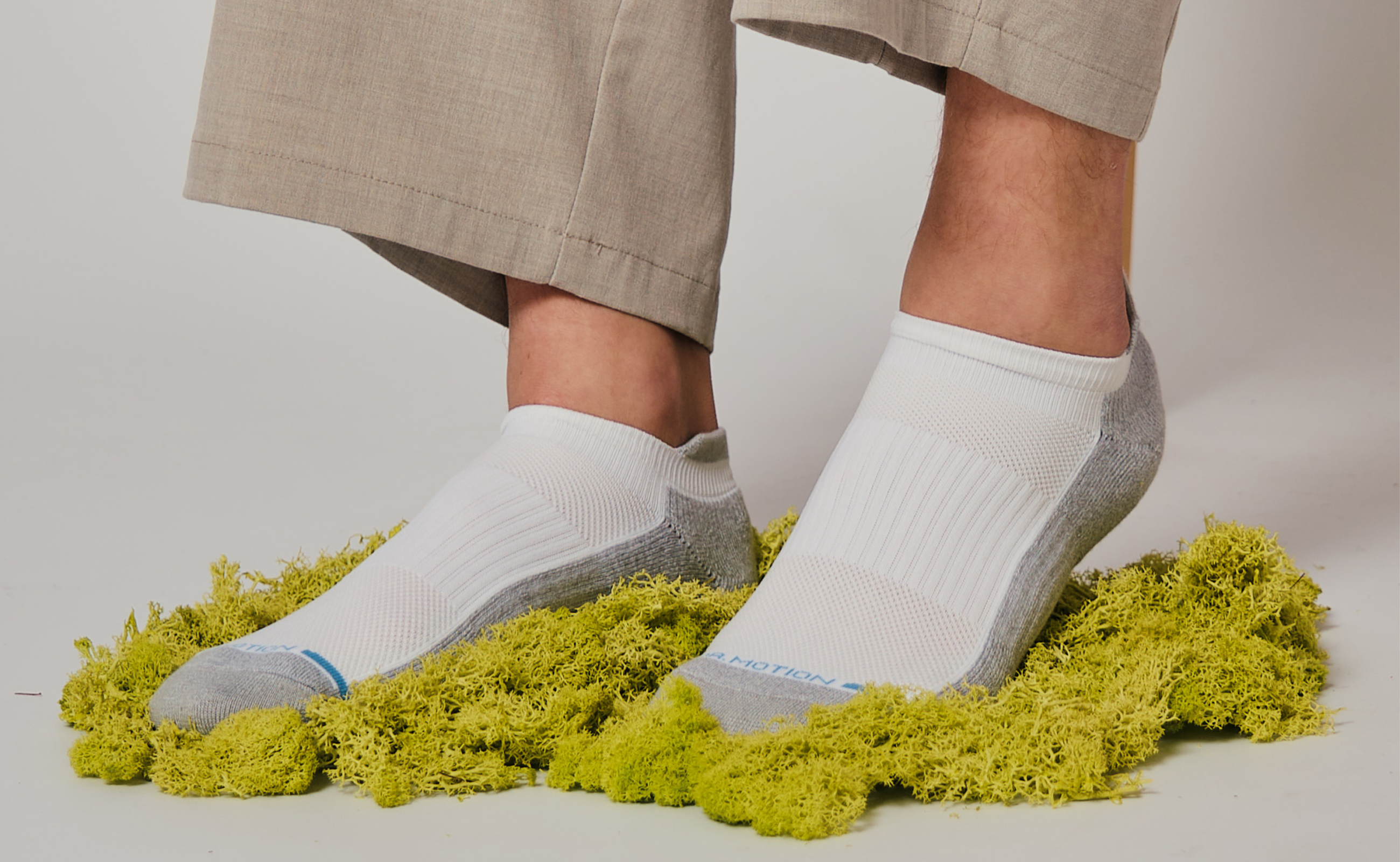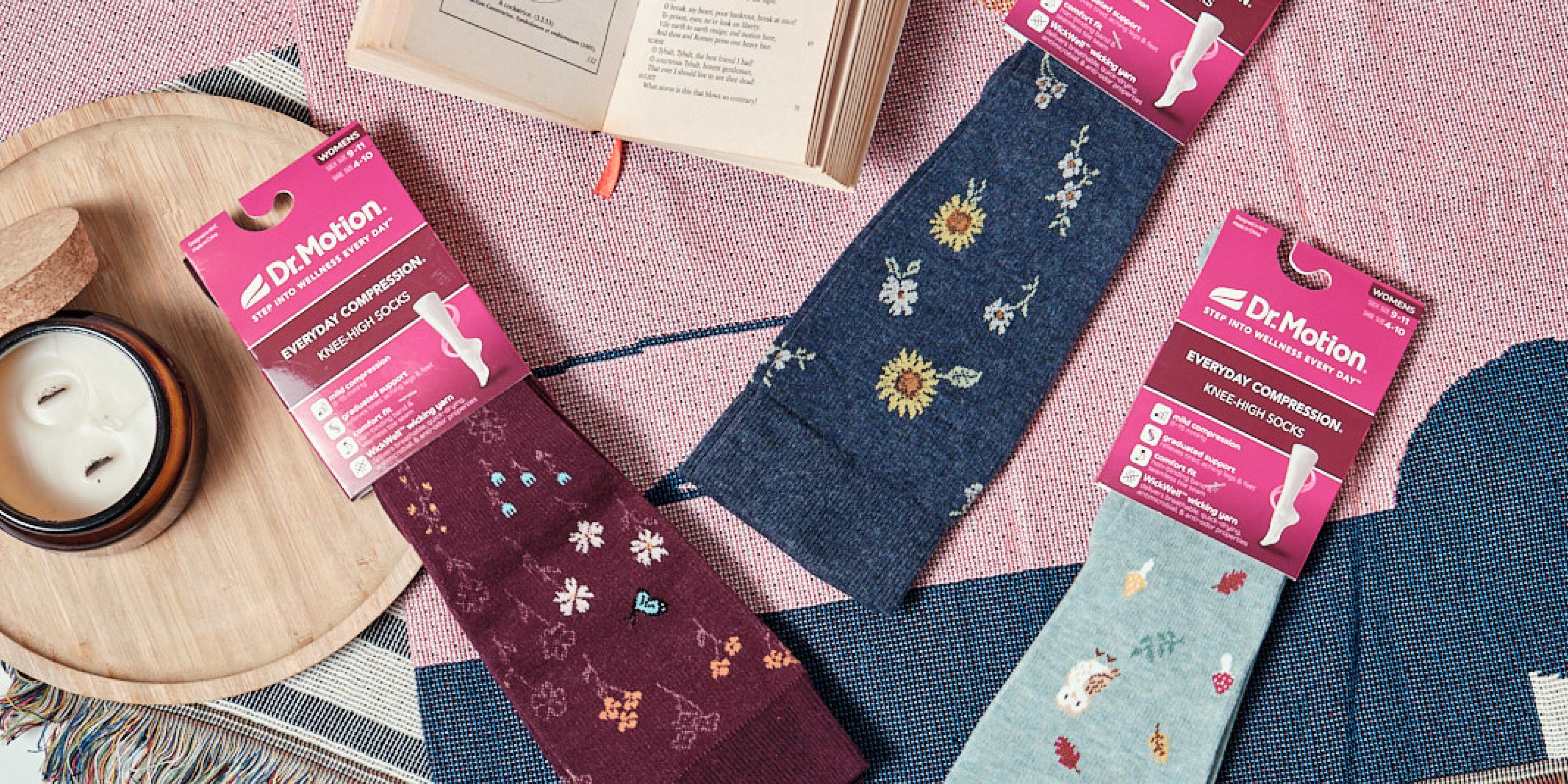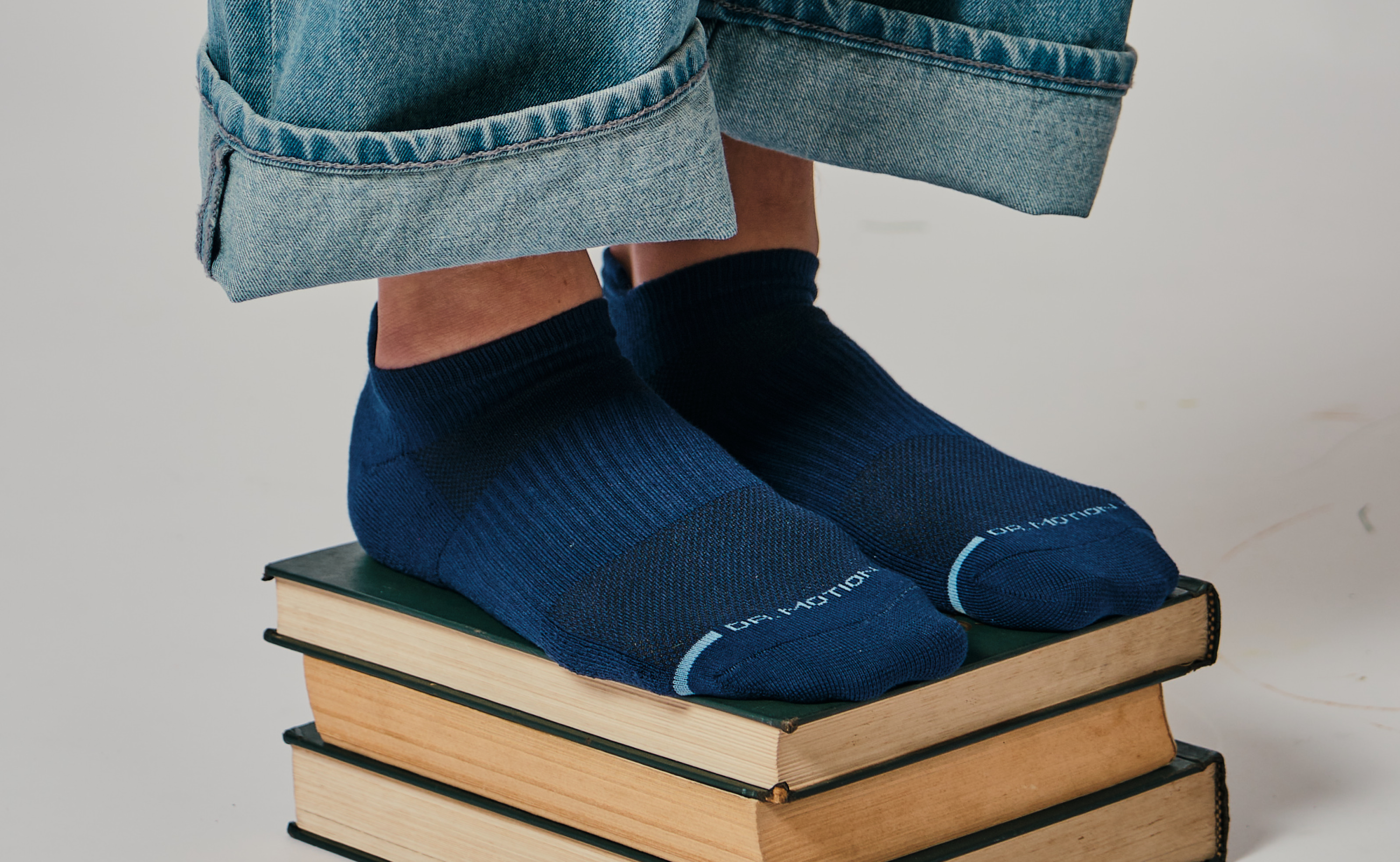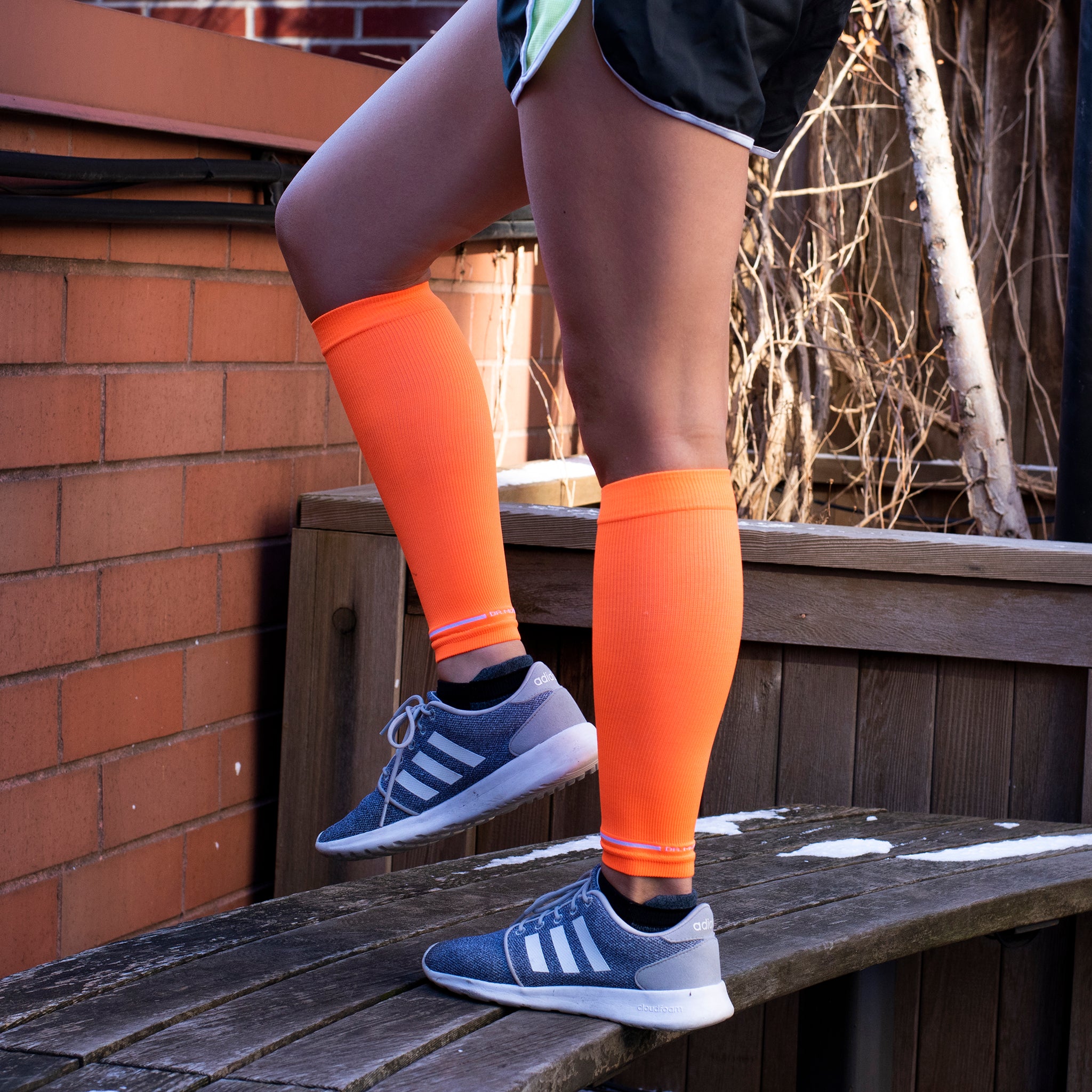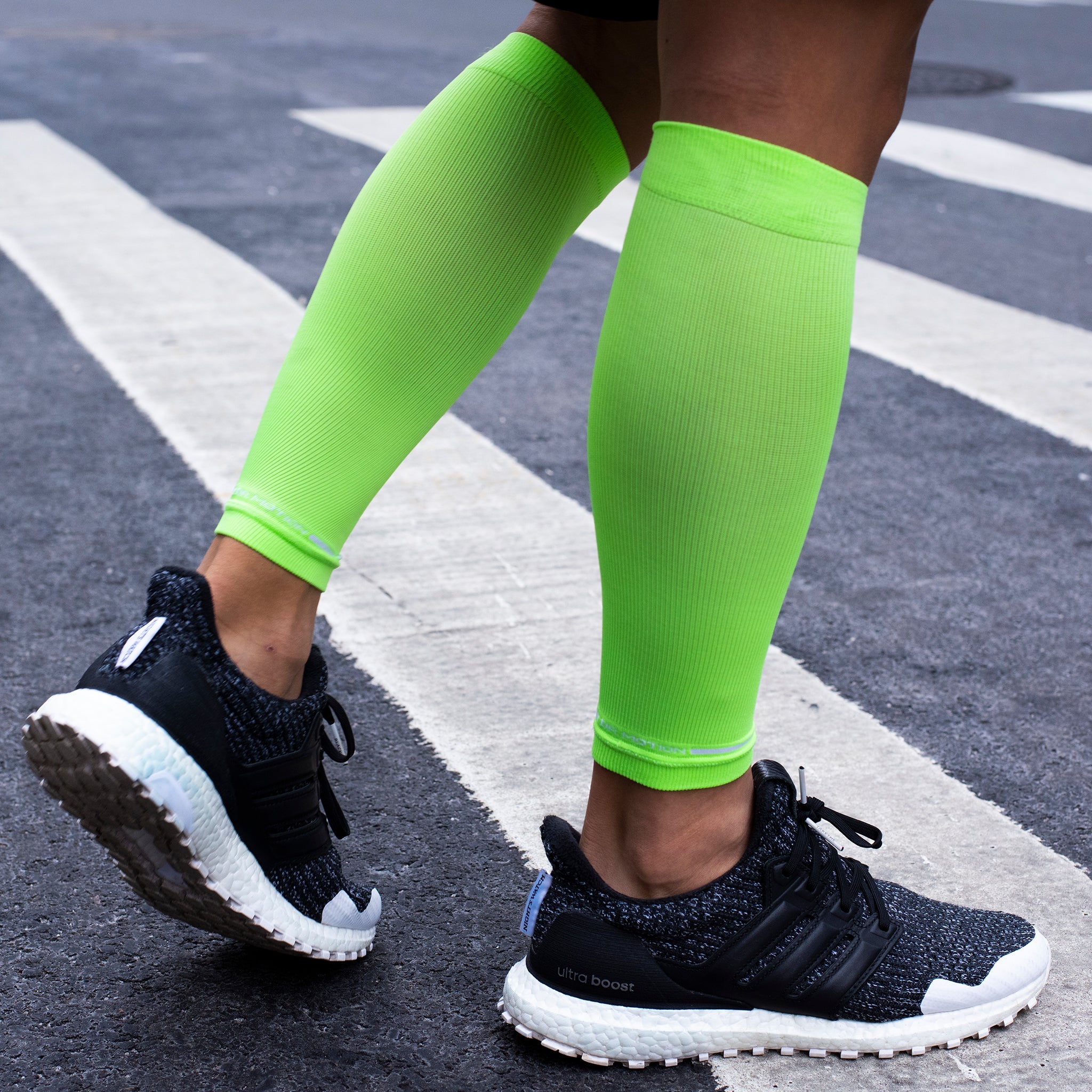3 Stretches to Help Improve Leg Circulation, Feet Circulation, & More [Infographic]
Your heart is the most important muscle in your body, and it's tasked with an enormous amount of responsibilities, like moving your blood from your brain to your toes and back again. Of course, it never hurts to give your heart a little help, so we've found a few exercises to help improve circulation in feet, legs, and other body parts that can usually use some assistance with blood flow.

Does stretching improve circulation? Sure it does. According to Medical News Today, stretching, bending, and twisting helps compress and decompress people's veins, which may be attributed to better circulation overall. With this in mind, we've found some movement tips to improve circulation that you can practice at home, at work, or anywhere you need to unwind your blood vessels a bit.
1. Downward Dog
Downward dog is one of the most known yoga poses because it's a position most people can do, regardless of how flexible they are. The benefit comes from the fact that the whole body is inverted, which means more blood flows to the brain. Not only this, but if you're looking for leg stretches to improve circulation, downward dog fits the bill because you can stretch as much or as little as you're comfortable with, gradually increasing your stretch as your flexibility improves.
2. Legs-Up-the-Wall Pose
This isn't as much of a stretch as it is a pose, but it's a great way to relax and give your body a refresh of blood flow. Laying on your back on the floor, scoot your bottom up against the wall and extend your legs vertically for 20 minutes. If this is too difficult, place a chair within legs' distance and rest your calves on the chair while you lay on the floor. For optimal relaxation, add a lavender-scented pillow over your eyes so you can truly enjoy the peace this pose brings.
3. Squats
According to Dr. Victoria Shin, featured in a Silver Sneakers article, "The legs are the most common body part to suffer the effects of [peripheral artery disease] PAD." Squats help work the leg muscles, which in turn encourages improved circulation over time. To perform this exercise:
- Start with your feet shoulder- or hip-width
- Hold your arms straight out in front of you
- Push your hips back
- Bend your knees to lower your body into a squat, being careful not to let your knees cave in
- Pause
- Gradually work back up into your starting position
- Repeat
If the standard type of squat is too difficult for you because of mobility or health reasons, you can modify this stretching exercise so you still get the benefits from it. This exercise can be done from an actual seated position on a chair. If you have knee pain or issues that make this exercise difficult, perform it from a seated position and only go as far as your body allows, then sit back down. Even a small range of motion will give you some positive effects.
Takeaways
- Simple stretching exercises lead to increased blood flow and can be done at work or at home
- Most stretches only take a few minutes and are available to a wide variety of people, regardless of how flexible they are
- Stretching for a few minutes a day can make a big difference in terms of a healthy heart and body
If you're looking for tips or habits to improve circulation, a few simple stretches done throughout the day can enhance blood flow and cause happier, healthier blood vessels and veins. If you're curious how to improve leg circulation while sleeping, stay tuned to our Dr. Motion blog to learn about the benefits compression socks offer. At Dr. Motion, we know about circulation because that's what our business is built on. Check out our women's and men's compression socks today and get ready to give your legs a break!
Disclaimer: This article provides information solely for educational purposes, including but not limited to text, graphics, images, and other materials contained herein. This article is not intended to substitute for professional medical advice, diagnosis, or treatment. Always seek the advice of your physician or another qualified healthcare provider with any questions you may have regarding a medical condition.



